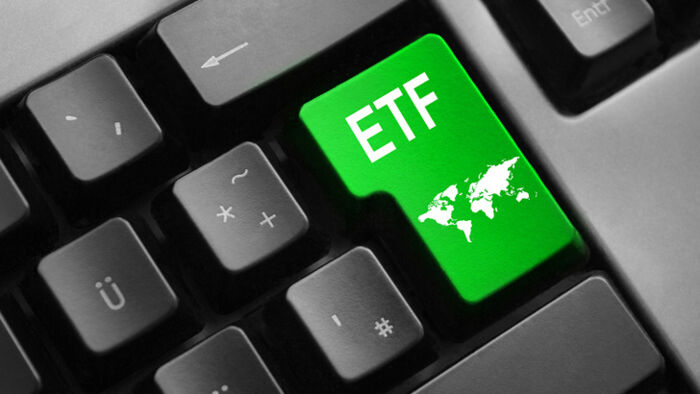These ETFs tick the right boxes for SMSFs
By Money Team
Global exposure and diversification are the talk of the town. But not, it would seem, among all the nation's 600,000-plus self-managed super funds (SMSFs).
The Australian Taxation Office (ATO) publishes quarterly data on SMSF asset allocations. The latest figures (June 2023) confirm that the $876 billion invested in SMSFs is heavily concentrated in just two asset classes: cash ($147 billion) and Australian shares ($260 billion).
Together, these two asset classes account for close to half of all SMSF assets.
Even within their sharemarket holdings, SMSFs tend to focus on a limited number of names. A report by the SMSF software company Class shows that BHP and Woodside Energy are the two most commonly held stocks, favoured by almost one in two SMSFs.
Along with the resources sector, SMSFs also gravitate to financial stocks. The top 10 shareholdings are dominated by Westpac (held by 41% of SMSFs), CommBank (39%), NAB (39%), ANZ (38%) and Macquarie Group (28%).
This can be a red flag for SMSF trustees.
James Kingston is head of wealth solutions and insights, Australasia, at BlackRock, which manages the iShares suite of exchange traded funds (ETFs). "A high concentration in individual stocks can be rewarding, but it can also carry significant risks," he says.
"Individual stock returns can constantly fluctuate. An investor's risk appetite and time horizon - that is, how long they want to invest for - will determine whether they can withstand this volatility."
One strategy to help manage volatility is to invest in multi-asset ETFs.
Core of a portfolio
Just as ETFs have surged in popularity among individual investors who are attracted to their low-cost diversification, the ATO data confirms SMSF holdings in listed funds have jumped 70% over the past five years.
Broadly speaking, ETFs can focus on one, or many, asset classes.
"Single-asset class ETFs provide exposure to a particular asset class, such as stocks or bonds," says Kingston. "They can cover a broad range of sectors and geographies by tracking the performance of a representative index, such as the S&P/ASX 200 for Australian stocks."
However, for time-poor trustees, or those who aren't confident about selecting investments, Kingston says a multi-asset ETF can be used to form the core of the SMSF's portfolio.
"A multi-asset ETF, such as the iShares Balanced ESG ETF (ASX: IBAL), provides exposure to multiple asset classes, each with different characteristics. The benefit is that if one asset class performs negatively, the other asset classes within the ETF can potentially cushion some of those losses."
Multi-asset ETFs can also allow SMSFs to tap into hard-to-access asset classes, such as bonds, which can provide an element of capital stability.
As a guide, the iShares Balanced ESG ETF has a portfolio evenly allocated between global equities (50%) and global fixed income (50%). "In a single trade, investors can tap into more than 7000 stocks and bonds spanning nine regions across the globe," says Kingston.
"For investors with a moderate risk tolerance, who are seeking a balance between capital preservation and growth, a multi-asset ETF, such as IBAL, may offer additional ballast to their SMSF in terms of stabilising portfolio volatility and risk, and preserving future income."
Global markets in the mix
ATO data also reveals a surprising homegrown bias among SMSF investments. Just $14 billion is collectively held in overseas shares, a tiny fraction of the $260 billion allocated to Australian stocks.
"Having a high concentration of risk in a particular market is akin to putting all your eggs in one basket," cautions Kingston.
"It not only means losing out on winning markets, it also means losing the opportunity to offset losses occurring in one market, for example Australia, when other markets might be faring better.
"Global diversification through a multi-asset ETF helps investors navigate fast-changing markets around the world and stay the course
to pursue their financial goals."
Another BlackRock fund - the iShares High Growth ESG ETF (ASX: IGRO) - features a globally diversified high-growth portfolio, with 90% invested in global equities and the remaining 10% in global fixed income.
It is a blend that has been thoughtfully put together by the BlackRock team.
"Within the equities sleeve, 56% is allocated to international equities and 34% is in Australian equities," says Kingston.
"Similar to the IBAL ETF, it has more than 7000 stocks across more than nine global borders - all in one single trade."
A key point of difference is the higher growth tilt of the iShares High Growth ESG ETF. There is still an exposure to bonds, although smaller, and this broad diversification allows SMSFs to potentially lower volatility and risk, yet still seek high returns.
According to Kingston, the balanced product could be more suited to investors seeking capital growth with a medium risk-return profile, while the high-growth version is worth a look by investors seeking capital growth with a medium to high risk-return profile.
Both the iShares ETFs pay distributions quarterly, which makes them a source of regular income for SMSF members in the drawdown phase.
This report is sponsored by iShares. It was independently researched and written.
Get stories like this in our newsletters.


